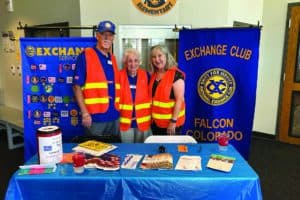ìYou have died of dysentery.îThe 1985 Apple II video game ìOregon Trailî used that phrase with disturbing frequency to tell players they lost. The game wasn’t far off from reality by using the phrase so often. Plenty of real people moving west along the real Oregon Trail and the Santa Fe Trail faced death by dysentery ñ- along with smallpox, cholera and tuberculosis. Doctors and facilities were also few and far between the lonely homesteads dotting the prairie.They still are.The U.S. Department of Agriculture defines rural ìfood desertsî as an area where residents live more than 10 miles from the nearest supermarket or major grocery store that carries fresh fruits and vegetables. Are there also ìmedical care deserts?î Areas where the residents are at risk for untreated illness because of the distance to medical care? Or where emergency care is delayed after a critical injury, stroke or heart attack?Residents of Rush, Truckton and Yoder face a 45-minute or longer drive to either Penrose St. Francis Medical Center or Memorial Hospital. Urgent care and family doctors are only a couple minutes closer in Falcon and on the Powers corridor. If ìmedical care desertsî exist, the far east and southeast portions of El Paso County would definitely qualify. Besides the obvious physical cost of medical care being far away, the distance to the nearest emergency room can mean missed financial opportunities for people trying their hand at modern homesteading and country living. A television production company approached us at Gray Area Farm to be part of an upcoming series on homesteading and living off-grid. We were dropped from the audition process when producers realized that the nearest hospital was ìtoo far.î It was, apparently, too risky for the camera and sound crew to be working on a potentially hazardous small farm that far from emergency care. It was stunning to get that response from the same industry that puts camera crews on crab fishing boats in the Bering Sea. What, then, does that say for those of us who live and work this far (or farther) day in and day out? Residents ìout hereî take those questions with a bit of resignation in the form of gallows humor. At the beginning of rattlesnake season, the Rush-based Tri-County Volunteer Fire Department posted a list of things to remember about rattlesnake bites on their Facebook page. ìKill it if you can, at least for revenge; plus, it is always fun to load the snake aboard the helicopter when we fly you out for your anti-venom … the flight nurse loves it,î the post read. ìAnd it can be used for positive identification of the type of snake that bit you.îThe post essentially assumes that critically ill or injured residents will be transported by helicopter rather than ground ambulance. Rattlesnake venom treatment needs to be started within two hours, and ìtime is brainî for stroke or heart attack victims. A 45-minute ambulance ride even after the initial response time for EMTs can mean a much poorer outcome than a direct helicopter sprint. Emergency care isn’t the only ìmedical care desertî issue that faces a rural east county. Even colds, flus, sprains and other everyday issues are more challenging. A 2-mile run down Meridian Road to Walgreens is much easier to pull off late at night when you’re out of children’s cold medicine than a 35-mile trek. If it’s snowing or flooding out, it may be just impossible.For those of us who moved ìout to the countryî with our suburban habits of a 5-minute Walgreens run, that habit breaks with only one two-hour ordeal to get children’s Robitussin late at night. Or maybe a couple of those runs. Some of us are slow learners. Maybe there would be less usage of a hospital or well-staffed urgent care center in the rural areas even if one was available. The homesteading and country life crowd is a self-sufficient bunch. For folks who grew up in rural areas, being ready as ìDr. Mom (or Dr. Dad)î was always a way of life. Some of the multi-generation ranching families own fully stocked first-aid bags that would make a battle medic nod approvingly. Gardens include medicinal herbs and plants like comfrey, lemon balm and, indeed, often cannabis, grown to supplement the medicine cabinet supplies. Essential oil companies are popular side businesses for rural residents. Resources like dial-a-nurse through health insurance companies can also help rural residents make a more informed decision about whether they need to make the journey by wagon down the trail ñ- or by the family car down Highway 94, which sometimes seems like the same thing ñ- to a doctor. Unfortunately, self-diagnosing and putting off urgent care needs can also put people at risk. Many treatable diseases can become full-blown crises if blown off or mistreated at home. The modern survival medicine websites and the old 1800s homesteaders’ resources are both written assuming that trained doctors and modern facilities aren’t available at all. They are never supposed to be used instead of proper medical care. Even for people deliberately trying to get back to old fashioned lifestyles, there is a lot that has changed since the late 1800s version of homesteading. So, while the most likely place to die of dysentery nowadays is a retro video game, there are plenty of other ways to get to ìgame overî when living in a health care desert. Common sense, preparation and an interested but skeptical eye at ìold timey” and fad cures may be the best way to get back in the game.
| Editorís note: ìThe New Falcon Heraldî will be following the homesteading and local food movement from the point of view of one reporter, Jason Gray, who moved to 40 acres near Rush to create a partially self-sufficient homestead. The Pasture-Raised Life will appear monthly. |





